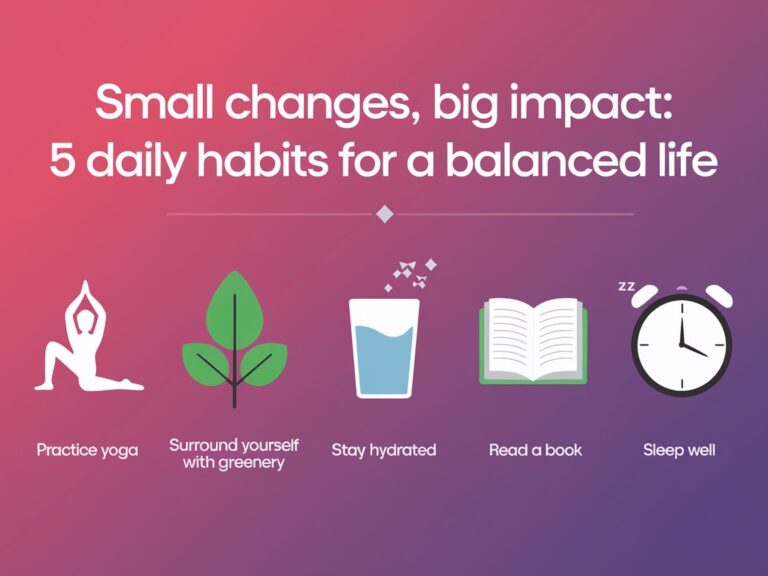How to Organize Your Day Effectively: 5 Tips
for 100% Guaranteed Results to Feel Relaxed 0 stress
In today’s fast-paced world, organizing your day effectively can feel like an uphill battle. With endless to-do lists, distractions at every turn, and the constant pressure to do more, it’s easy to feel overwhelmed.
However, effective time management is key to reducing stress, increasing productivity, and ultimately feeling more relaxed and in control.
In this article, we will explore five actionable tips that can help you organize your day effectively, ensuring you achieve 100% guaranteed results and enjoy a greater sense of calm.
Tip 1: Prioritize Tasks
The first step in organizing your day is to prioritize your tasks. Not all tasks are created equal, and understanding what truly matters is essential.
Start by making a comprehensive list of all the tasks you need to accomplish for the day. Once you have your list, it’s time to prioritize.
One effective method for prioritizing tasks is the Eisenhower Matrix, named after former U.S. President Dwight D. Eisenhower. This matrix categorizes tasks into four quadrants:
- Urgent and Important: Tasks that need immediate attention. These should be your top priority.
- Important but Not Urgent: Tasks that are significant but can wait. Schedule these for later in the day or week.
- Urgent but Not Important: Tasks that need to be done quickly but aren’t crucial to your long-term goals. Delegate these if possible.
- Not Urgent and Not Important: Tasks that can be eliminated or postponed. These often lead to procrastination and should be minimized.
By using the Eisenhower Matrix, you can clearly differentiate between what’s urgent and important, ensuring that you focus your energy on tasks that will have the most significant impact on your day. Prioritizing tasks not only boosts productivity but also provides a clear direction, reducing the anxiety that often comes with uncertainty.
Tip 2: Time Blocking
Once you’ve prioritized your tasks, the next step is to implement time blocking. Time blocking is a time management technique that involves allocating specific time slots for different activities or tasks throughout your day. This method helps create a structured routine, which can significantly enhance focus and productivity.
To start time blocking, follow these steps:
- Review Your Prioritized Tasks: Look at the tasks you’ve prioritized and determine how much time each task will realistically take.
- Create Time Blocks: Dedicate specific time slots for each task on your list. For example, you might block off 9:00 AM to 10:00 AM for responding to emails and 10:15 AM to 11:30 AM for a project.
- Include Breaks: Don’t forget to schedule short breaks between blocks. This can help prevent burnout and keep your mind fresh.
- Stay Flexible: While it’s important to stick to your schedule, life can be unpredictable. Allow for some flexibility in your time blocks to accommodate unexpected tasks or interruptions.
By establishing a structured routine, you can reduce the temptation to multitask, which often leads to decreased productivity and increased stress. Time blocking allows you to focus on one task at a time, giving you the mental space to work efficiently and effectively.
Tip 3: Set Goals
Setting clear and achievable goals is crucial for effective organization. When you start your day without a clear direction, it’s easy to get sidetracked or overwhelmed. To set meaningful goals for your day, consider the following:
- Define Your Goals: What do you want to achieve by the end of the day? Be specific about what you want to accomplish.
- Make Goals Achievable: While it’s great to aim high, ensure that your goals are realistic given your time and resources. Focus on two to three key tasks that you can reasonably complete.
- Use the SMART Criteria: Make your goals Specific, Measurable, Achievable, Relevant, and Time-bound. For example, instead of saying, “I want to work on my project,” specify, “I will complete the first draft of my project by 3 PM.”
- Visualize Success: Take a moment to visualize what achieving your goals will look like. This can motivate you to stay focused and committed throughout the day.
By establishing clear goals, you can channel your energy into completing specific tasks, which not only enhances productivity but also brings a sense of accomplishment. Completing goals can provide a dopamine boost, making you feel more relaxed and satisfied with your day.
Tip 4: Limit Distractions
Distractions are a significant barrier to effective organization and productivity. In a world filled with notifications, social media, and constant interruptions, it’s crucial to identify and minimize distractions during your work periods. Here are some strategies to help you focus:
- Identify Common Distractions: Take note of what typically distracts you during the day. Is it your phone, social media, or noise from your environment?
- Create a Dedicated Workspace: Establish a workspace that is free from distractions. This could be a specific room in your home or a quiet corner in a café. Ensure your workspace is organized and conducive to concentration.
- Turn Off Notifications: Silence notifications on your devices while you work. This simple step can significantly reduce interruptions and help you stay focused.
- Set Boundaries: Communicate with others about your work hours. Let family members or housemates know when you need uninterrupted time to work.
- Use Focus Tools: Consider using apps or tools designed to block distracting websites or limit your screen time. Techniques like the Pomodoro Technique, which involves working for 25 minutes and taking a 5-minute break, can also enhance focus.
By limiting distractions, you create an environment that fosters concentration, allowing you to accomplish more in less time. This increased focus can lead to a greater sense of achievement and relaxation at the end of the day.
Tip 5: Review and Adjust
At the end of the day, it’s essential to take a moment to reflect on your accomplishments. This practice of reviewing and adjusting is critical for continuous improvement in organizing your day. Here’s how to effectively review your day:
- Set Aside Time for Reflection: Dedicate the last 10–15 minutes of your workday to review what you’ve accomplished.
- Ask Reflective Questions: Consider questions like:
- What tasks did I complete today?
- What worked well, and what didn’t?
- Were my goals realistic?
- How can I improve my organization for tomorrow?
- Celebrate Small Wins: Acknowledge and celebrate your achievements, no matter how small. This positive reinforcement can boost motivation and confidence.
- Adjust for Tomorrow: Based on your reflections, adjust your plan for the next day. If certain tasks took longer than expected, re-evaluate your time blocks and goals.
By regularly reviewing and adjusting your approach, you can identify patterns and make necessary changes to enhance your productivity and organization over time. This habit not only improves your efficiency but also contributes to a greater sense of control and relaxation.
Conclusion
Organizing your day effectively is an ongoing process that requires practice and commitment. By prioritizing tasks, implementing time blocking, setting clear goals, limiting distractions, and regularly reviewing your progress, you can achieve a sense of control and relaxation in your daily life.
Remember: Effective organization is not just about getting more done; it’s about creating a structure that allows you to work efficiently while also finding time for relaxation and self-care. Start implementing these tips today and enjoy the benefits of a well-organized day!



